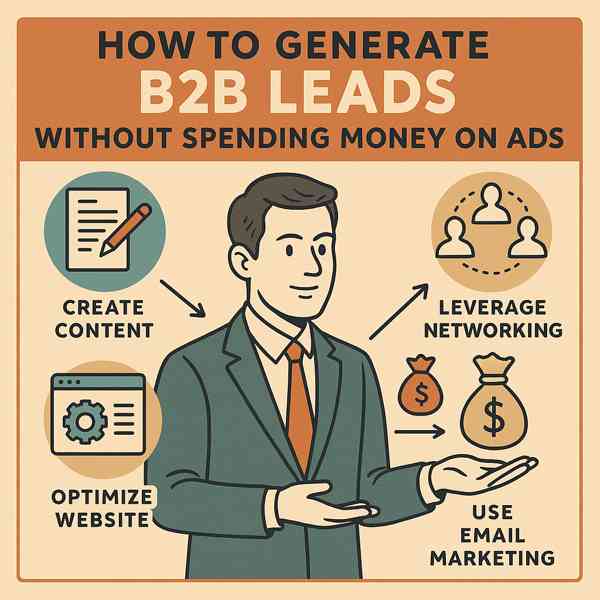Pricing Psychology: How to Present B2B Offers Strategically
Pricing psychology is an important part of business-to-business (B2B) sales. It focuses on how to present offers in a way that attracts clients. Understanding how customers think about prices can help businesses succeed. This article will explore strategies for presenting B2B offers effectively. We will discuss techniques that can influence decision-making and drive sales.
Understanding Pricing Psychology in B2B Markets
![]()
Pricing psychology refers to the study of how people perceive prices. In B2B markets, this perception can greatly affect purchasing decisions. Here are some key points to understand:
- Customers often look for value over price.
- First impressions matter. The initial price shown can set expectations.
- People may not always choose the cheapest option.
- Bundling services can make offers more appealing.
- Discounts can create urgency but may lower perceived value.
- Transparency in pricing builds trust with clients.
In B2B settings, companies must grasp these concepts. They help in crafting offers that resonate with potential clients. For example, a company might highlight the long-term savings of a more expensive product. This shifts focus from the initial cost to overall value.
The Importance of Perceived Value in Pricing
![]()
Perceived value is how much a customer believes something is worth. This can differ from the actual price. To enhance perceived value, businesses can:
- Showcase unique features of their products.
- Use testimonials from satisfied clients.
- Offer guarantees or warranties.
- Highlight any awards or certifications received.
- Create case studies showing successful implementations.
- Provide clear, detailed information about the product.
For instance, a software company might share stories of clients who improved efficiency using their service. This demonstrates value beyond just cost. When clients see real-world benefits, they are more likely to invest.
Setting the Right Price: Psychological Pricing Techniques
![]()
Psychological pricing techniques can influence buying behavior. Businesses can use several methods:
- Charm pricing: Ending prices with .99 can make them seem lower.
- Anchor pricing: Showing a higher original price next to a discount.
- Tiered pricing: Offering multiple packages at different price points.
- Price bundling: Combining products for a single price.
- Decoy pricing: Introducing a third option to make another seem better.
- Time-limited offers: Encouraging quick decisions through urgency.
For example, a company might list a premium package at $500 and a basic one at $300. If they introduce a middle option at $490, it makes the premium package seem like a better deal. This technique can lead to increased sales across all options.
Creating Attractive Offers Through Bundling
![]()
Bundling involves combining products or services into a single offer. This strategy can add value for customers. Here’s why bundling works:
- It simplifies decision-making for clients.
- It can provide cost savings compared to buying items separately.
- It encourages customers to try additional products.
- Bundles can highlight complementary products.
- They can improve customer satisfaction by meeting more needs.
- Businesses can increase average order value through bundles.
A good example is a marketing agency offering a package that includes social media management, content creation, and SEO services. By bundling these services, they provide comprehensive solutions that appeal to clients looking for efficiency.
Using Discounts Strategically to Drive Sales
![]()
Discounts can be powerful tools in B2B sales. However, they must be used wisely. Here are some tips for using discounts effectively:
- Offer limited-time discounts to create urgency.
- Use discounts as rewards for loyal customers.
- Consider volume discounts for bulk purchases.
- Clearly communicate the value of the discount.
- Avoid making discounts a regular practice to maintain value.
- Test different discount strategies to find what works best.
For instance, a tech company might offer a 20% discount for first-time buyers. This encourages new customers to try their products while still maintaining the perceived value of their offerings.
Building Trust Through Transparency in Pricing
![]()
Being transparent about pricing is crucial in B2B relationships. Clients appreciate honesty and clarity. Here are ways to build trust through transparency:
- Clearly outline what each price includes.
- Explain any additional fees upfront.
- Provide detailed quotes that break down costs.
- Share pricing structures publicly on websites.
- Communicate openly about changes in pricing.
- Encourage questions and provide prompt answers.
A construction firm, for example, might provide a detailed estimate that lists labor, materials, and other costs. This level of detail fosters trust and helps clients feel secure in their investment.
Leveraging Social Proof to Influence Buyers
![]()
Social proof can significantly impact buyer decisions. It refers to the influence of others’ experiences on our choices. Here’s how to leverage social proof:
- Showcase client testimonials on your website.
- Highlight case studies demonstrating successful outcomes.
- Feature logos of well-known clients you’ve worked with.
- Encourage online reviews and ratings.
- Share user-generated content showcasing your products.
- Utilize influencer endorsements if applicable.
For instance, a cloud service provider might display testimonials from major corporations. Seeing trusted names associated with the brand can reassure potential clients about the quality of the service.
Conclusion: Key Takeaways on Pricing Psychology
![]()
In summary, understanding pricing psychology is essential for B2B success. Companies should focus on:
- Enhancing perceived value through testimonials and guarantees.
- Using psychological pricing strategies to influence decisions.
- Creating attractive offers with bundling.
- Applying discounts strategically without devaluing products.
- Building trust through transparent pricing practices.
- Leveraging social proof to persuade potential buyers.
By applying these principles, businesses can present their offers more effectively. This ultimately leads to better sales and stronger relationships with clients. Understanding how customers think about pricing can give companies a significant advantage in the competitive B2B landscape.




